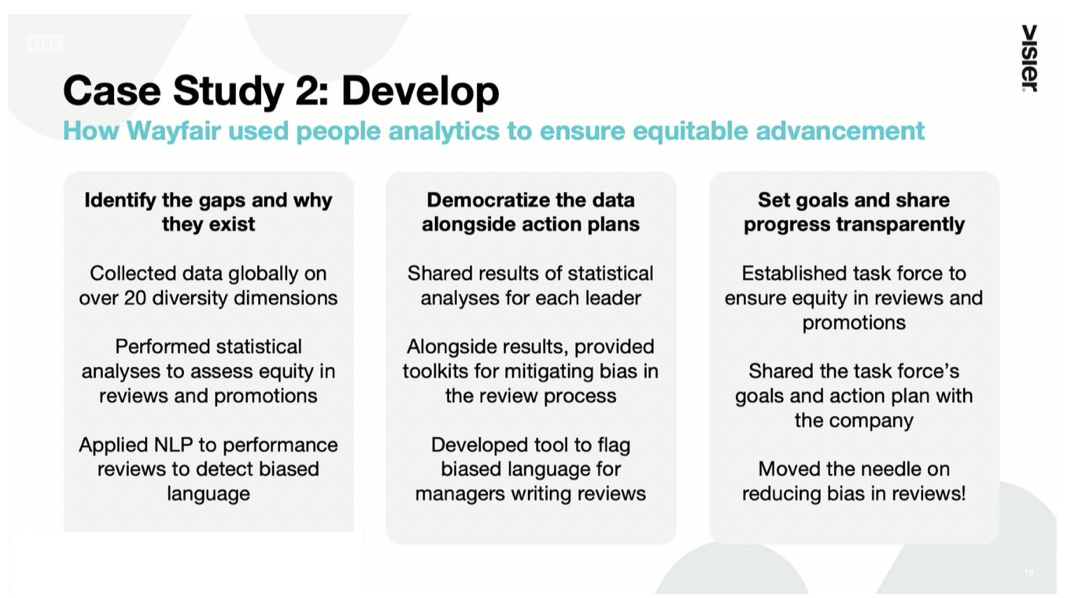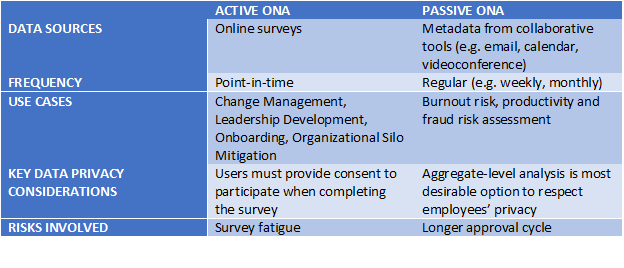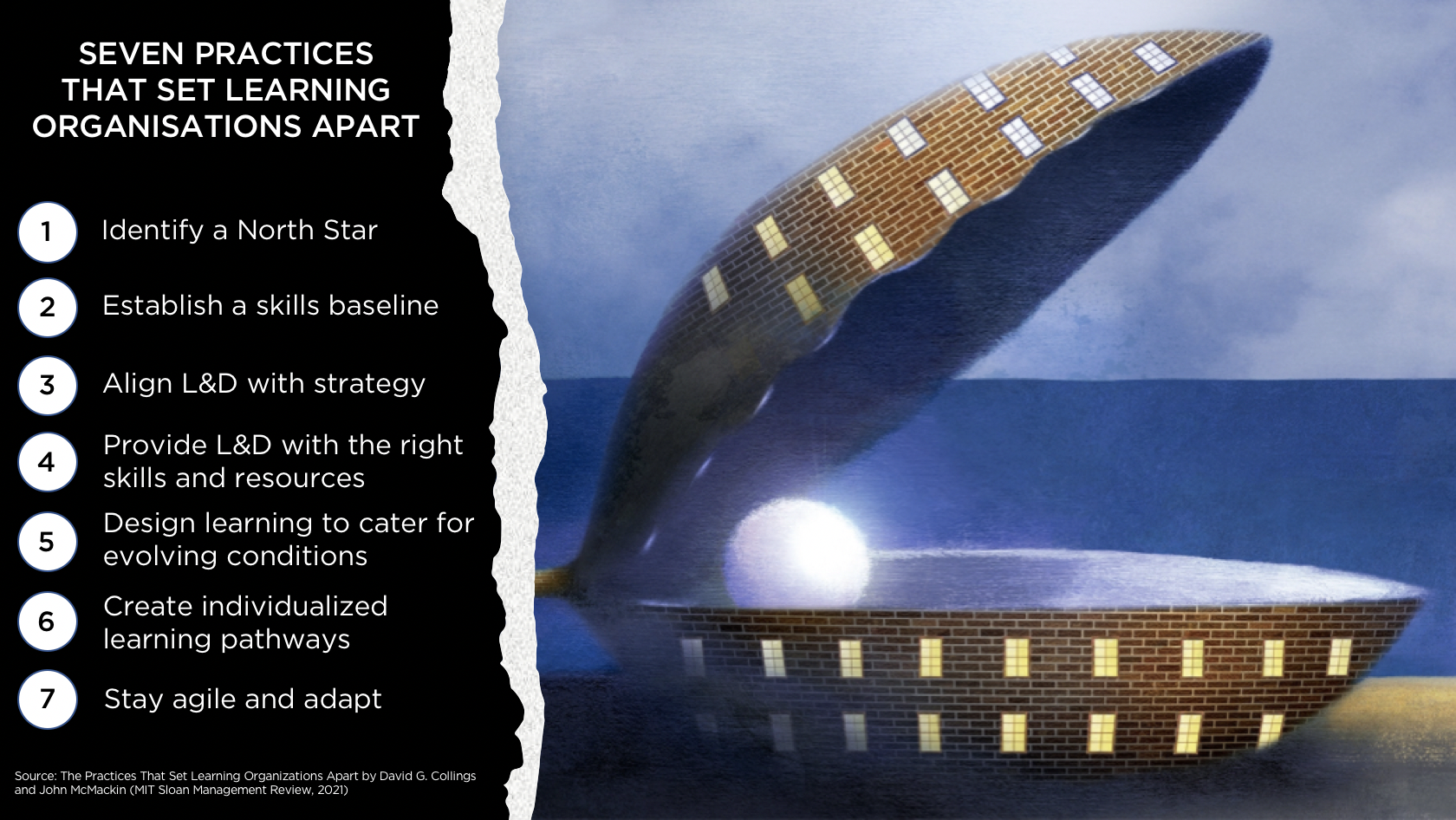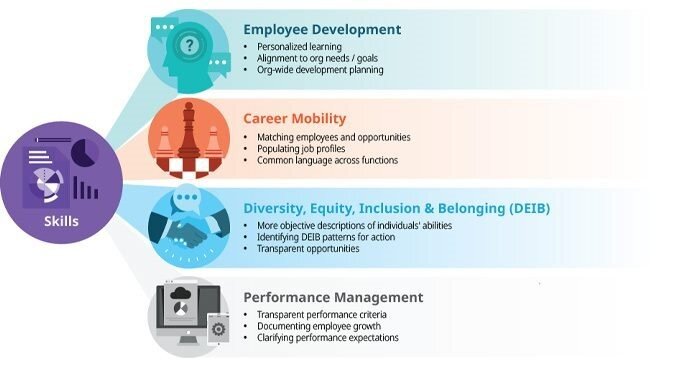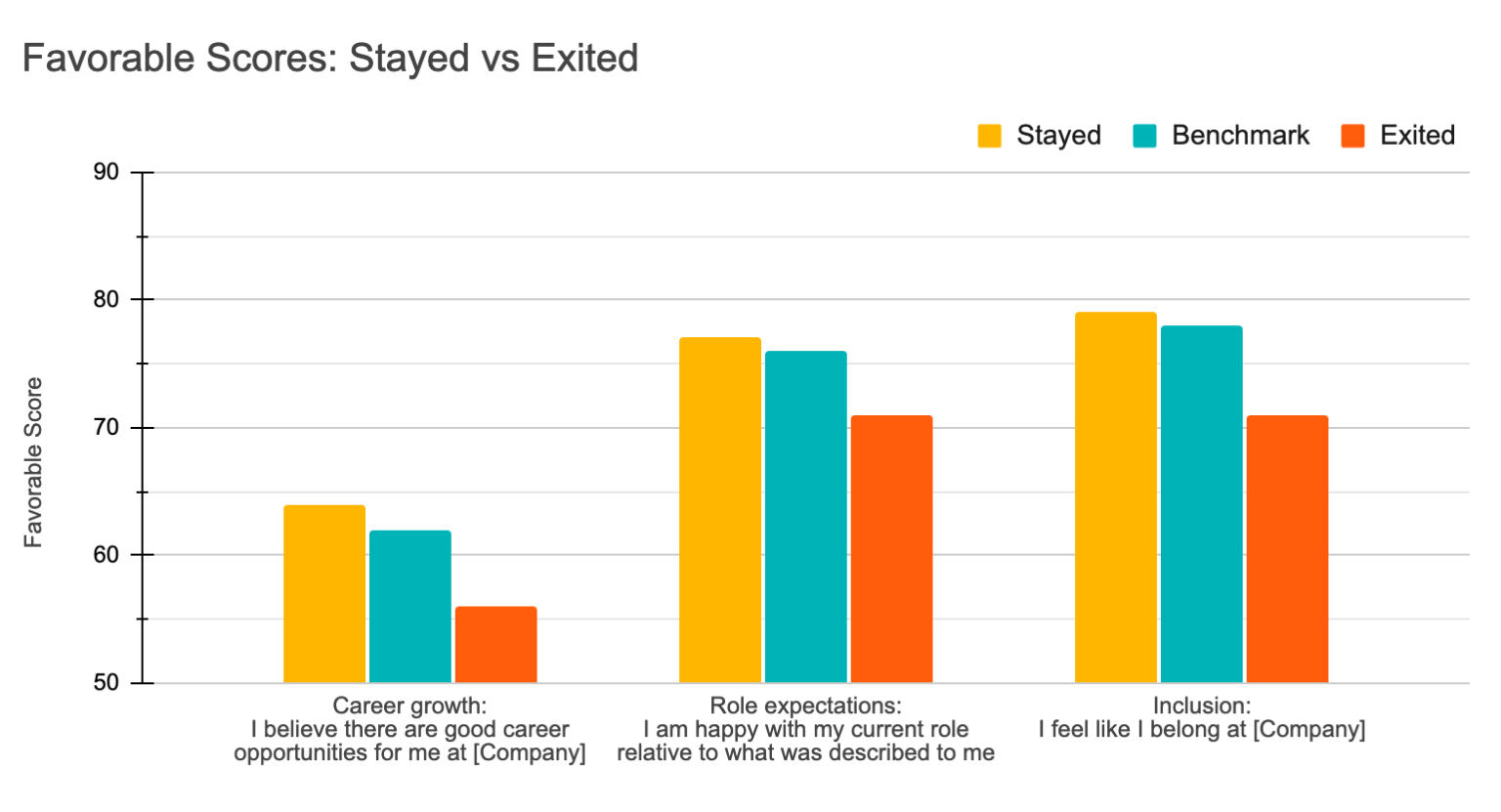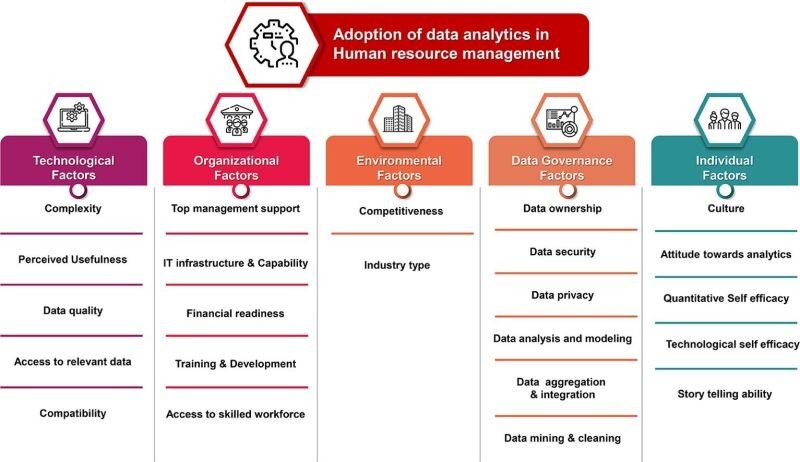The Best HR & People Analytics Articles of April 2021
Welcome to my regular collection of the best HR and People Analytics resources of the month. If you enjoy a weekly dose of curated learning (and the Digital HR Leaders Podcast), the Digital HR Leaders newsletter comes out every Tuesday – subscribe here.
Last week, I had the pleasure of speaking at People Analytics World, where I gave a sneak preview of Excellence in People Analytics: How to Use Workforce Data to Create Business Value, my new book with Jonathan Ferrar, which is due to be published on July 3rd.
In the book, Jonathan and I put forward that the pandemic has helped propel people analytics into its fourth age – The Age of Value. This an era defined by people analytics delivering value directly to the business and characterised by four pillars: trust, inclusion, purpose and equality.
Each of these pillars shone through in many of the sessions I saw at People Analytics World. Especially in relation to how people analytics teams are helping their companies to conduct experiments to shape return to workplace and future ways of working strategies.
Experimentation is a big theme this month and indeed because I’ve taking the plunge to test LinkedIn’s new newsletter functionality. This experiment has been inspired by Hung Lee (thanks, Hung), who persuasively explains here that LinkedIn provides three ways to discover a ‘newsletter’: via Notifications tab, via Newsfeed as a result of my sharing the preview as a post and via Email sent by LinkedIn to people who choose to subscribe. Do let me know in the comments if you find this helpful, unhelpful or whether it makes no difference!
On to this month’s collection, which again sees a focus around future ways of working and resources from several chief human resources officers and people analytics leaders including: Nickle LaMoreaux (IBM), Tanuj Kapilashrami (Standard Chartered), Isabel Naidoo (FIS), Claude Silver (VaynerMedia), Madhura Chakrabarti (Syngenta), Dylan Mendelsohn (Wayfair), Andreas Kyprianou (Upfield) and Alexander Westerdahl (Spotify).
Enjoy reading, and please share liberally with your colleagues and networks.
FUTURE OF WORK | RETURN TO WORKPLACE
ANDREA ALEXANDER, AARON DE SMET, MEREDITH LANGSTAFF & DAV RAVID - What employees are saying about the future of remote work
Powerful insights and visualisations from new McKinsey research to support organisations in planning the post-pandemic future and delicately balancing productivity, culture and wellness. While only a minority of companies (32%) have a well-communicated vision for post-pandemic work, those that do are seeing benefits to both productivity and well-being (see FIG 1). Other findings from the survey of over 5,000 employees include 49% reporting that they feel at least somewhat burned out as well as 53% saying that they would like to work from home for three or more days per week.
FIG 1: Organisations with clearer communications are seeing benefits to employee well-being and productivity (Source: McKinsey)
LYNDA GRATTON – How to Do Hybrid Right
The shift to virtual working has helped the majority of employees experience the benefit of more flexibility in where and when they work. As companies plan and implement their return to workplace and future ways of working strategies, they have a once-in-a-lifetime opportunity to reset work under a hybrid model. In the cover story of the current Harvard Business Review, Lynda Gratton explains that to do this successfully, leaders will need to do two things: design hybrid work arrangements with individual human concerns in mind, not just institutional ones; and conceptualise new work arrangements around the axes of place and time (see FIG 2).
When designing flexible work arrangements, focus on individual human concerns, not just institutional ones
FIG 2: Work arrangements in place and time (Source: Lynda Gratton, HBR)
NICKLE LAMOREAUX AND BRIAN ELLIOTT - This is how IBM and Slack are approaching Hybrid work
Nickle LaMoreaux, IBM’S CHRO and Brian Elliott, the VP of Slack’s Future Forum put forward their ideas about the post-pandemic working world in their insightful article. Starting from the position of hybrid work being relatively untested in their respective organisations, they go on to discuss a decentralised approach to decision making, communication, flexibility and reimagining collaboration space – both in the office and virtually. The four questions (see FIG 3) in the article, that the writers encourage every company to ask of themselves as they seek to get hybrid work right are particularly powerful.
FIG 3: Four questions to help them make hybrid work more successful (Source: Nickle LaMoreaux, Brian Elliott, Fast Company)
BRUCE DAISLEY - 10 Stage Guide to Planning Your Return
One of my personal favourite episodes of the Digital HR Leaders Podcast was with Bruce Daisley on what business leaders want from HR. In one of the recent editions of his Make Work Better newsletter, Bruce offers a ten-step guide to helping companies plan their return to workplace strategies. All ten steps resonate, but a few to highlight include: i) This is a time for experiments not decisions, ii) Reflect on what workers want, and; ii) Consider the network effect of the office.
NITHYA VADUGANATHAN, ALLISON BAILEY, SIBLEY LOVETT, FRANK BREITLING, RENEE LAVERDIERE & DEBORAH LOVICH – The how-to of hybrid work
The question facing most companies today (and which people analytics leaders in the companies we work with at Insight222 are being asked to tackle) is: How can we preserve the benefits of remote or hybrid work as offices reopen without unintentionally institutionalising the downsides of virtual models? This article from BCG highlights practices that can act as guidance for the next phase in the future of work in terms of identifying the right models, implementing these while learning to experiment, test and iterate and putting in place the right enablers to support new ways of working (see FIG 4).
FIG 4: Five types of enablers are essential to support new ways of working (Source: BCG)
PEOPLE ANALYTICS
SAYANTANI PYNE - Unlocking Value Through HR Analytics – The Infosys Story
As Sayantani Pyne writes in her powerful case study, Infosys started its people analytics journey ten years ago. She describes the key steps in the journey as i) combining the knowledge of CoEs, HR business partners and operations into an Analytics Council, ii) creating a vision and strategy for the function, iii) using governance to set up a firm foundation, and iv) activating the vision through technology and process change. The section on how Infosys uses people analytics to solve challenges such as attrition, performance management, skills adjacency, employee development and remote working are especially instructive. There is lots to learn and absorb here. Thanks to Gautam Ghosh and Krish Shankar for bringing this to my attention.
HR Analytics at Infosys aspires to create a data culture where managers take data driven talent decisions and HR teams use data and analytics to solve business problems.
LEXY MARTIN & DYLAN MENDELSOHN - How Wayfair Uses People Analytics to Improve DEI
“We share data to show leaders their opportunity areas, and alongside the data, share toolkits with specific actions they can take to make improvements,” says Dylan Mendelson, People Analytics Manager at Wayfair. Lexy Martin weaves a compelling story on how Wayfair and Visier partnered to put data in the hands of Wayfair’s leaders to enable the company to improve their diversity, equity, and inclusion strategies.
At Wayfair, we like to say that data is our thermostat
FIG 5: Source: Visier
PETER ROMERO & ANDREAS KYPRIANOU - Where is The Future of People Analytics? Not in HR.
A bold piece in which the authors predict that “the future of People Analytics is not as part of Human Resources, but instead will become a critical part of overall organisational analytics.” They then make a case supporting their assertion that “BI departments will merge with People Analytics departments, or rather swallow those and create a range of experts in quantitative organisational analytics.” Finally, Peter and Andreas provide a practical roadmap for people analytics professionals including developing a strong organisational acumen, leveraging relationships (and data) with other analytics professionals in the company and seeking out the best talent. A highly recommended read.
(People Analytics professionals) have to practice the art of diplomatically refusing projects and requests, and focus on fewer but better projects
FRANCISCO MARIN & ANDREW SPENCE - The New Technology of Teams: How Organizational Network Analysis Can Increase Team Collaboration
Francisco and Andrew explore the role of organisational network analysis (ONA) in understanding team dynamics and collaboration. In what is a very helpful read for those exploring the use of ONA, the article looks at the two ‘types’ of ONA (active and passive – see FIG 6), and provides examples of how ONA helps support business challenges around productivity, D&I, wellbeing and M&A.
FIG 6: Active and passive ONA (Source: Francisco Marin and Andrew Spence)
THE EVOLUTION OF HR
DAVE ULRICH - Clarifying Terms in Human Resource “HR”: A Blueprint for Action
It seems entirely apt that Dave Ulrich, widely acknowledged as the father of modern HR, has created here a compelling blueprint for HR moving forward which, as illustrated in FIG 7, is premised on building human capability. The article is a preview of findings from the eighth round of Dave’s HR Competency study (to be released in a webinar from Dave on May 11 – sign up here), which identifies what HR professionals should be, know, and do to be effective.
FIG 7: A blueprint for HR going forward (Source: Dave Ulrich)
EMPLOYEE EXPERIENCE
TANUJ KAPILASHRAMI & LARRY EMOND - Refining the Employment 'Product' at Standard Chartered Bank
One of the most listened to episodes to date of the Digital HR Leaders Podcast is the episode with CHRO Tanuj Kapilashrami, on how Standard Chartered is designing an exceptional employee experience. As this interview with Larry Emond of Gallup reveals, Tanuj’s approach to HR (“In HR, we're actually product managers), which blends technology, data and research “can make workplaces far more inclusive, far less hierarchical, and get the best discretionary effort out of the workforce,” and drive tremendous benefit for the business ("And we've found that it opens up some extraordinary opportunities").
With the right technology deployed the right way, you're not just improving the employee experience; you're unlocking productivity in the company.
NAINA DHINGRA, ANDREW SAMO, BILL SCHANINGER & MATT SCHRIMPER - Help your employees find purpose—or watch them leave
Fascinating research from McKinsey, highlighting that employees increasingly expect their work to provide a significant sense of purpose to their lives – and why if employers don’t meet this need, they risk losing talent to companies that will. The article examines the role work plays in individual purpose, highlights what employees want from employers and what they aren’t getting, outlines the link between purpose and outcomes (see FIG 8), and describes what companies can start doing about it.
People who live their purpose at work are more productive than people who don’t. They are also healthier, more resilient, and more likely to stay at the company.
FIG 8: Source: McKinsey & Company
LEARNING
DAVID G. COLLINGS & JOHN McMACKIN - The Practices That Set Learning Organizations Apart
New research reveals that relatively few organizations had strong L&D programs in place before the pandemic. However, reskilling has never been more crucial as Covid-19 accelerates trends such as workplace automation, AI, and advanced analytics. From the research, the authors identified seven key practices (see FIG 9) that enable successful organisations to build flourishing learning and development programs.
FIG 9: Seven practices that set learning organisations apart (Source: David G. Collings and John McMackin)
HEATHER GILMARTIN ADAMS & STACIA GARR - The 4 Business Challenges Employee Skill Development Can Solve
Drawing on their research into skills for RedThread Research, Heather and Stacia highlight a key insight: “Skills aren’t all that useful by themselves.” Put another way: “knowing what skills your workforce has and what skills they need is merely an interesting intellectual exercise if not coupled with a business challenge that knowledge can help address.” Heather and Stacia then outline four business challenges that skills can help to solve (see FIG 10): i) employee development, ii) career mobility, iii) diversity, equity, inclusion and belonging, and; iv) performance management.
FIG 10: How Skills Can Support 4 Business Objectives (Source: RedThread Research)
LEADERSHIP & CULTURE
AMY EDMONDSON & MARK MORTENSEN - What Psychological Safety Looks Like in a Hybrid Workplace
What changes will be required those managing teams in a hybrid environment. As Amy Edmondson and Mark Mortensen explain in their excellent article, when it comes to psychological safety, managers have traditionally focused on enabling candour and dissent with respect to work content. The problem is, as the boundary between work and life becomes increasingly blurry, managers must make staffing, scheduling, and coordination decisions that take into account employees’ personal circumstances — a categorically different domain. Obviously, simply saying “just trust me” won’t work. Instead, the authors suggest a series of five steps to create a culture of psychological safety that extends beyond the work content to include broader aspects of employees’ experiences.
Psychological safety takes time to build, but moments to destroy
JOHN BOUDREAU & JONATHAN DONNER - Are You Ready to Lead Work Without Jobs?
The way we have traditionally organised work and workers is undergoing a fundamental shift. As John Boudreau and Jonathan Donner state in their thoughtful article: “We are moving toward a new work operating system that will deconstruct work into tasks and projects that may be assigned not only to employees but also to machines and contingent workers in talent marketplaces.” This will entail a profound change on the role of leaders. The authors set out the challenges and what this means before outlining the leadership competencies that will be required for ‘work without jobs’ including shifts: i) from hierarchical authority to empowerment and alignment, ii) from technical to humanistic work automation, and iii) from episodic to continual focus on diversity, equity, and inclusion.
Work without jobs will actually enhance the impact of leaders’ humanity, differentiating good from great organizations
ETHICS
ISAAC H. SMITH, MARYAM KOUCHAKI & JUSTIN WAREHAM - The Price Leaders Pay for Cutting Ethical Corners | REID BLACKMAN - If Your Company Uses AI, It Needs an Institutional Review Board
Two powerful articles highlighting the importance of having governance in place around ethics covering topics such as technology – and people analytics. Not only is it the right thing to do, it mitigates risk and also (as in the first article) prevents negative impact on employee motivation and performance. The second article, by Reid Blackman, advocates setting up an internal review board to “help companies think through hard ethical problems — saving money and brand reputation.” At Insight222, we advocate a similar ‘ethics council’ governed by an ethics charter to govern the wise and ethical use of people data in an organisation.
DIVERSITY, EQUITY & INCLUSION
CORINNE POST, BORIS LOKSHIN & CHRISTOPHE BOONE - Adding Women to the C-Suite Changes How Companies Think
What are the specific mechanisms that drive the positive business outcomes associated with increasing the number of women in the C-suite? In this extremely compelling article, the authors share new research that explores exactly how the addition of female executives shifts companies’ strategic approach to innovation. Based on their analysis of more than 150 companies, the authors find that after women join the top management team, firms become more open to change and less open to risk, and they tend to shift from a strategy focused on mergers and acquisitions to more investment into internal research and development. In other words, when women join the C-suite, they don’t just bring new perspectives — they actually shift how the C-suite thinks about innovation, ultimately enabling these firms to consider a wider variety of strategies for creating value.
Having more diverse perspectives to weigh in on key decisions can make a group more open to change, and more likely to see change as feasible.
HR TECH
NICHOLAS FEARN – A look at how big tech is breaking into HR Technology
A good sign of the relative health of the HR Tech market is that the world’s biggest technology companies are continuing to invest and make inroads into the space. Nicholas Fearn tracks the progress and examines the challenges these behemoths face in a market that is being transformed by the impact the pandemic is having on the future of work and workplace.
SONIA MOONEY - Technology is not the answer... it’s the question
As HR professionals, we’re all seeking to make a positive impact on our business, our workforce and our function. Technology is an enabler that helps us to do this, but as Sonia Mooney writes in her article it is not the answer. Sonia offers five simple concepts (see FIG 11) to help “unlock the true power of technology, shape the most effective solutions and deliver better business outcomes.”
FIG 11: Five key concepts to unlock the true power of technology (Source: Sonia Mooney)
HR TECH VOICES
Much of the innovation in the field continues to be driven by the vendor community, and I’ve picked out a few resources from April that I recommend readers delve into:
KIERAN SNYDER - Zoom sessions consistently draining? Take an energy audit of your meetings – Textio’s CEO, Kieran Snyder, provides some helpful tips on how to rethink our meetings: how we schedule them, how we replace the ones we can, and how we mix up the ones we keep.
SARAH JOHNSON - There’s No Such Thing As Survey Fatigue When You Act On Employee Feedback – There’s a big clue in the title of this succinct but important piece by Sarah Johnson of Perceptyx: “It’s not survey fatigue. It’s lack-of-action fatigue. Listening is great, but it’s more important to act on what we’ve heard.”
THEO DAVEY - How the AI Hype has shaped the Employee Engagement Market – Theo Davey from Pansensic has been publishing a number of interesting articles via LinkedIn in recent weeks including this one on how advances in technology have helped shape the employee engagement market
TOM McKEOWN - Ask The Right Questions Before Choosing A People Analytics Solution – Some good advice here from Tom McKeown, CEO and co-founder of TrenData.
FRESIA JACKSON - Why your best employees are leaving and how to stop it – Findings from a study by Culture Amp on employee turnover, which identifies three key reasons why employees leave (see FIG 12), how inclusion is the most important factor in keeping managers, and the benefit of being transparent.
FIG 12: Three key reasons why employees leave (Source: Culture Amp)
PODCASTS OF THE MONTH
This month I’ve selected six varied but all brilliant podcasts to dive into (you can also check out the latest episodes of the Digital HR Leaders Podcast – see ‘From My Desk’ below):
STACIA GARR, CHRIS PIRIE & MADHURA CHAKRABARTI – The realities of building a tech-enabled skills framework – Madhura, the Global Head of People Analytics at Syngenta, joins the new podcast from RedThread Research to describe how together with her L&D team, Syngenta has launched an innovative cross-company skills framework supported by a new learning platform implementation.
ARIANNA HUFFINGTON & ADAM GRANT – How to make the most of gratitude - Two titans of our field come together as Adam joins Arianna to share what he’s learned about putting gratitude into action, why we need new metrics of success, and what he’s had to rethink over the past year.
MATT ALDER & JOSH BERSIN – The future of talent acquisition – The best-known analyst. In our field joins Matt Alder’s Recruiting Future podcast to discuss reskilling, talent mobility, talent marketplaces and much, much more.
DIANE BRADY, ELIZABETH YOUNG McNALLY & MATTHEW SMITH - Building a learning culture that drives business forward – A recent episode of the McKinsey Podcast on how businesses can create a learning culture and invest in the capabilities that will help individuals and organisations thrive.
LUCINDA CARNEY & MERVYN DINNEN - Internal Mobility as a Talent Management Strategy – The always listenable Mervyn Dinnen highlights insights from his recent research on internal mobility and how it links to employee engagement. Thanks to Hung Lee for highlighting this podcast in a recent edition of Recruiting Brainfood.
YESSI BELLO-PEREZ & ALEXANDER WESTERDAHL – Spotify’s VP of HR on Working from Anywhere – Alexander Westerdahl speaks to UNLEASH about the need to recreate an office experience online and Spotify’s work from anywhere model.
VIDEO OF THE MONTH
TIM PEFFERS – 17 insights I learned at Tucana People Analytics World
As referenced in the introduction this month, the 56 hour data extravaganza that was People Analytics World took place from 19-23 April. Tim Peffers, Organisation Analytics Manager at PMI, shares his 17 insights from the event in an entertaining, witty and perceptive six minute video.
RESEARCH PAPERS OF THE MONTH
There are two fascinating papers to pore over this month…
AIZHAN TURSUNBAYEVA, CLAUDIA PAGLIARI, STEFANO DI LAURO & GILDA ANTONELLI - The ethics of people analytics: risks, opportunities and recommendations
An important paper designed to understand how ethical considerations in people analytics are being discussed by researchers,13industry experts and practitioners, and to identify gaps, priorities and recommendations for ethical practice.
SATEESH V. SHET, TANUJ PODDAR, FOSSO WAMBA SAMUEL & YOGESH K. DWIVEDI - Examining the determinants of successful adoption of data analytics in human resource management – A framework for implications
The second paper explores the challenges associated with the adoption of people analytics and offers a framework (see FIG 13) for practitioners and academics to overcome these challenges.
FIG 13: Framework for Adoption of data analytics in HRM (Source: Shet, Poddar, Samuel, Dwivedi – see here)
BOOK OF THE MONTH
SHARNA WIBLEN - Digitalised Talent Management: Navigating the Human-Technology Interface
Sharna Wiblen has collected together some of the foremost academics in our field in a book that focuses on the digitisation of talent management. The book offers “theoretically, methodologically and empirically informed insights that are especially salient given the need for executives and organisations to balance the role of humans and technology, while ensuring competitiveness in this interconnected and increasingly digital world.” Contributors include Alec Levenson, Andy Charlwood and Sharna herself with the chapter by Janet Marler and Lexy Martin on the causal link between companies strength in people analytics and their financial performance (at least 7% greater in return on assets and 8% in profit margin) being especially fascinating.
FROM MY DESK
This month has seen three new episodes of the Digital HR Leaders Podcast, all kindly sponsored by ChartHop:
CLAUDE SILVER - Building a culture that drives business success and wellbeing
When Claude Silver took the new role of ‘Chief Heart Officer’ in 2015 she agreed with VaynerMedia’s CEO Gary Vaynerchuk how they would define the success of her role: “…we'll touch every single individual and infuse the agency with empathy.” As you’ll hear from our discussion, that’s exactly what Claude has achieved. Learn how: i) Claude has redefined HR at VaynerMedia,ii) she is supported by a team of ‘culture champions’, iii) together with Gary they have fused people and business strategy and developed a culture of ‘kind candor, and; iv) Claude helped shape the company’s response to the crises of the last 15 months.
ISABEL NAIDOO - How to design HR programs for impact and personalised experiences
One of the most impressive aspects of Isabel Naidoo’s work at FIS, where she is the Global Head of Inclusion and Talent, is how her team has seamlessly incorporated HR Tech, people analytics and agile methodology to deliver personalised employee experiences and quantified outcomes for the business.In our conversation, Isabel shares with me how: i) FIS is delivering customised learning experiences and supporting wellbeing, ii) FIS built capability in people analytics across the HR function, iii) a virtual onboarding program was stood up in a single weekend, and iv) the last 12+ months has changed what it means to lead.
IAN WHITE – How to manage and visualise people data to create actionable insights
Ian White is the CEO at ChartHop, one of the fastest growing and most exciting new technologies in our space. The company has grown by more than 10x since the start of the pandemic and Josh Bersin recently highlighted ChartHop as “a cool tool that displays every piece of data you need in a visual way.” In our conversation, Ian and I discuss i) how to bring data to life so that it leads to actionable insights, ii) why org design needs to evolve to support hybrid work, iii) how people analytics helps companies meet D&I goals, and; iv) the power of visualising data to drive decisions.
CATCH UP ON THE DIGITAL HR LEADERS PODCAST
If you haven't listened to all of the episodes of the Digital HR Leaders Podcast, you can catch up now by clicking on the links below.
EP 63: Ian White - How to manage and visualise people data to create actionable insights
EP 62: Isabel Naidoo - How to design HR programs for impact and personalised experiences
EP 61: Claude Silver - Building a culture that drives business success and wellbeing
Bonus Episode: Arianna Huffington & Donna Morris - How Walmart is helping its associates achieve healthier habits
EP 60: Alexis Saussinan - Creating business impact with people data and technology
EP 59: Karen Powell - Getting started with a skills-based talent strategy
EP 58: Ruslan Tobulatov - What are the business benefits of a Talent Marketplace?
EP 57: Jeroen Wels - How Unilever has created a culture of internal talent mobility
EP 56: Ina Gantcheva - Why Are So Many Companies Building Talent Marketplaces?
EP 55: Guru Sethupathy - How Capital One delivers value at scale with People Analytics
EP 54: Ethan Bernstein - How Can HR Help Organisations Prepare for Hybrid Working?
EP 53: Wagner Denuzzo - How HR enables business transformation at Prudential Financial
EP 52: Wenshan Xu - How Singapore uses skills data to support lifelong learning
EP 51: Dave Ulrich, Brigette McInnis-Day and Rupert Morrison - The Future of HR: How can HR can be more value and business focused?
BONUS EPISODE: David Green & Ian Bailie - 'All Eyes on HR' - HR Predictions for 2021
EP 50: Renil Kumar - How Wipro uses People Analytics to enable hyper-personalisation
EP 49: Michael Arena - How ONA can help understand the impact of virtual and hybrid working on innovation and wellbeing
EP 48: Daniel West - How to Democratise People Analytics to Drive Agile Decision Making
EP 47: Melissa Harper - How Bayer is redefining the workplace around Purpose, Innovation & Culture
EP 46: Chin Yin Ong - How people data can drive better business and employee outcomes
EP 45: Vidya Krishnan - Making learning a habit that matters at Ericsson
EP 44: Simon Brown - How Novartis promotes learning curiosity to drive business value
EP 43: Kat Kennedy - Improving Employee Experience through Learning, Skill Development & Mobility
EP 42: Gianpiero Petriglieri - How Do You Create a Learning Culture in the Workplace?
EP 41: Lynda Gratton - How can HR help shape the re-skilling and learning agenda?
Bonus Episode: Diane Gherson - How IBM is Reinventing HR with AI and People Analytics
Summer Special #5: Sophie Rwegera Khadhraoui - Building a People Analytics Function in a Humanitarian Organisation
Summer Special #4: Dan Cable - How to help people love what they do at work
Summer Special #3: Torin Ellis - What is HR's Role in Creating Diverse and Inclusive Organisations?
Summer Special #2: Tomas Chamorro-Premuzic - What is the role of leadership in times of crisis?
Summer Special #1: Amy Edmondson - How to create Psychological Safety at work
EP 40: David Green - How can People Analytics drive business value?
EP 39: Jeremy Shapiro - How People Analytics has progressed in the last ten years
EP 38: Heather McGowan - How Covid-19 is accelerating the Future of Work
EP 37: Thomas Rasmussen - How National Australia Bank has scaled People Analytics
EP 36: Ravin Jesuthasan - Six imperatives for HR in the Future of Work
BONUS EPISODE: Amit Mohindra & Dawn Klinghoffer - What is the future of People Analytics?
EP 35: Peter Hinssen - What is the role of HR in driving and enabling innovation?
EP 34: Bruce Daisley - What do business leaders want from HR?
EP 33: Dirk Jonker - Why People Analytics needs to behave like a start-up
EP 32: Cole Nussbaumer Knaflic - The role of storytelling in People Analytics and Data Visualisation
EP 31: Piyush Mathur - How Johnson & Johnson uses People Analytics to drive business outcomes
BONUS EPISODE - Heather Whiteman, RJ Milnor & Ian Bailie (Live at PAFOW) - How to develop the HR skills of the future
EP 30: Katy Gray - How Arup uses reward data to drive behavioural change
EP 29: Uri Ort - What is the future of talent assessment?
EP 28: Zara Nanu - The role of People Analytics in Gender Pay Analysis
EP 27: Julia Shaw - How can technology reduce bias in the workplace
EP 26: Stela Lupushor - How HR can be a Catalyst for Change
BONUS EPISODE: Volker Jacobs - How to scale Employee Experience
EP 25: Julie Digby - How HR Drives Transformation and Org Design at Mars
EP 24: RJ Milnor - How McKesson uses ONA to identify what drives high performance in sales
EP 23: Rupert Morrison - Rethinking Workforce Planning & Organisation Design
EP 22: Dawn Klinghoffer - The Evolution of People Analytics at Microsoft
EP 21: John Boudreau - Reinventing Jobs: The Future of Work and it's impact on HR
EP 20: Tanuj Kapilashrami - How Standard Chartered designed an exceptional Employee Experience
EP 19: Anna Tavis: What is Agile HR and how are companies adopting it?
EP 18: Sarah Johnson: How to use employee surveys to create strategic value
EP 17: Leena Nair - How HR drives business value at Unilever
EP 16: Keith McNulty - HR 3.0: more data driven, more agile and more business focused
EP 15: Jason Corsello - The Shift From HR Tech to Work Tech
EP 14: Jill Larsen - How does the CHRO successfully partner with the CEO
EP 13: Frida Polli - How AI and Behavioural Science can reduce bias in recruiting
EP 12: Ian O'Keefe - The Workforce Analytics journey at JP Morgan Chase
EP 11: Dave Ulrich - The role of HR in the Digital Age
EP 10: Jordan Pettman - How Nestlé uses People Analytics to measure Gender Pay Gap and Equity
EP 9: Catalina Schveninger - The Evolution of Corporate Learning at Vodafone
EP 8: Richard Collins - How is Automation, AI and Analytics changing recruiting?
EP 7: Katarina Berg - Spotify's CHRO on Leading HR in a digital world
EP 6: Nick Holley - How HR can become more business relevant
EP 5: Eden Britt - How to build a People Analytics team in a global organisation | The People Analytics journey at HSBC
EP 4: Yvette Cameron - How Blockchain will disrupt the Future of Work and HR Technology
EP 3: Didier Elzinga - How to Create a Culture First Company
EP 2: Edward Houghton - The Head of Research at the CIPD on Driving Business Performance with People Data
EP 1: Sharon Doherty - How to transform HR to be more digital and building a culture of diversity
ABOUT THE AUTHOR
David is a globally respected author, speaker, conference chair, and executive consultant on people analytics, data-driven HR and the future of work. As Managing Partner and Executive Director at Insight222, he has overall responsibility for the delivery of the Insight222 People Analytics Program, which supports the advancement of people analytics in over 70 global organisations. Prior to co-founding Insight222 and taking up a board advisor role at TrustSphere, David accumulated over 20 years experience in the human resources and people analytics fields, including as Global Director of People Analytics Solutions at IBM. As such, David has extensive experience in helping organisations increase value, impact and focus from the wise and ethical use of people analytics. David also hosts the Digital HR Leaders Podcast and is an instructor for Insight222's myHRfuture Academy. His book, co-authored with Jonathan Ferrar, Excellence in People Analytics: How to use Workforce Data to Create Business Value will be published in the summer of 2021.






